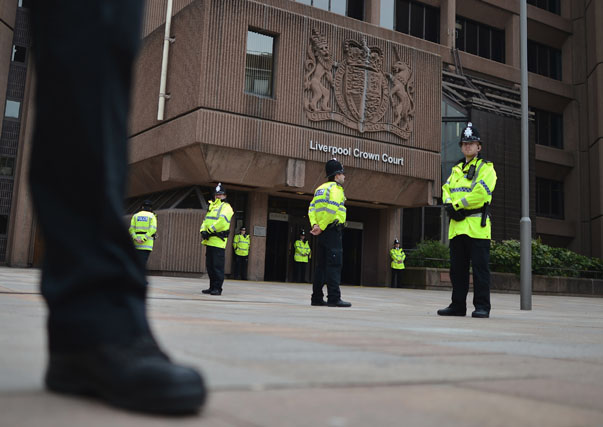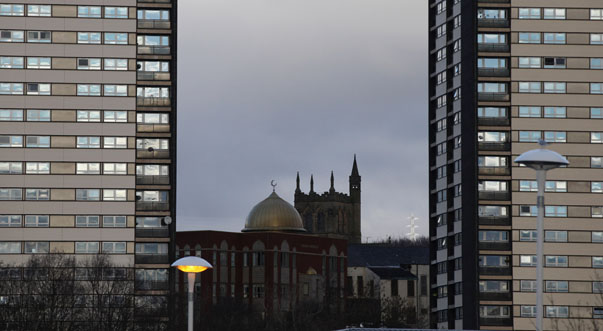The publication of a damning report into how the authorities handled child exploitation in Rotherham has prompted the leader of the local council to resign.
The independent inquiry by Professor Alexis Jay found that 1,400 youngsters suffered sexual exploitation including rape and trafficking in the South Yorkshire town over a 16-year period.
We know that the case which led to the conviction of five men in Rotherham is not the only one of its kind. Could the abuse that has already come to light be just the tip of the iceberg?
Here’s what we know (and what we don’t) about the child grooming gangs.
How many gangs?
The Child Exploitation and Online Protection Centre (Ceop) – the national anti-paedophile police command – divides networks of sex offenders into two groups.
So-called “Type 1 offenders” target young people “on the basis of their vulnerability, rather than as a result of a specific preferential sexual interest in children”.
Ceop received intelligence from 31 out of 43 police forces on groups like this who were known or suspected to have abused vulnerable children in 2012.
There were 57 such groups, ranging from two to 25 suspects, on the radar of those 31 constabularies. We don’t know if any have now been convicted.
So-called “Type 2” groups – where the offenders have a long-standing sexual interest in children, were much less common. Only seven known or suspected paedophile rings were reported to Ceop.
It is possible to track cases that have been through the courts via media reports, although this is pretty unscientific.
In 2011 the Times journalist Andrew Norfolk identified 17 cases that had led to convictions where there had been a similar pattern of grooming.
In all cases, the victims were vulnerable teenage girls, often in the care of social services. They were approached on the street by men, befriended and plied with alcohol or drugs, before being sexually abused.
Updating the list to include more recent convictions that fit the same pattern, we find that there have been at least 27 similar cases in the last decade.
By date of conviction, we have evidence of such exploitation taking place in Keighley (2005 and 2013), Blackpool (2006), Oldham (2007 and 2008), Blackburn (2007, 2008 and 2009), Sheffield (2008), Manchester (2008 and 2013) Skipton (2009), Rochdale (two cases in 2010, one in 2012 and another in 2013), Nelson (2010), Preston (2010) Rotherham (2010) Derby (2010), Telford (2012), Bradford (2012), Ipswich (2013), Birmingham (2013), Oxford (2013), Barking (2013) and Peterborough (2013).
This is based on a trawl of news sources so is almost certainly incomplete.
Race and religion
The Jay report into failings in Rotherham says: “By far the majority of perpetrators were described as Asian by victims, yet throughout the entire period, councillors did not engage directly with the Pakistani-heritage community to discuss how best they could jointly address the issue.
“Some councillors seemed to think it was a one-off problem, which they hoped would go away. Several staff described their nervousness about identifying the ethnic origins of perpetrators for fear of being thought racist; others remembered clear direction from their managers not to do so.”
Ceop data about the ethnicity of offenders and suspects identified by those 31 police forces in 2012 is incomplete.
The unit says: “All ethnicities were represented in the sample. However, a disproportionate number of offenders were reported as Asian.”
Of 52 groups where ethnicity data was provided, 26 (50 per cent) comprised all Asian offenders, 11 (21 per cent) were all white, 9 (17 per cent) groups had offenders from multiple ethnicities, 4 (8 per cent) were all black offenders and there were 2 (4 per cent) exclusively Arab groups.
Of the 306 offenders whose ethnicity was noted, 75 per cent were categorised as Asian, 17 per cent white, and the remaining 8 per cent black (5 per cent) or Arab (3 per cent).
By contrast, the seven “Type 2 groups” – paedophile rings rather than grooming gangs – “were reported as exclusively of white ethnicity”.
Ceop identified 144 victims of the Type 1 groups. Again, the data was incomplete. Gender was mentioned in 118 cases. All were female. Some 97 per cent of victims were white.
Girls aged between 14 and 15 accounted for 57 per cent of victims. Out of 144 girls, 100 had “at least one identifiable vulnerability” like alcohol or drug problems, mental health issues or a history of going missing. More than half of the victims were in local authority care.
The 27 court cases that we found led to the convictions of 92 men. Some 79 (87 per cent) were reported as being of South Asian Muslim origin.
Three were white Britons, two were Indian, three were Iraqi Kurds, four were eastern European Roma and one was a Congolese refugee, according to reports of the trials.
Considerable caution is needed when looking at these numbers, as our sample is very unscientific. There are grooming cases we will have missed, and there will undoubtedly be offences that have not resulted in convictions.
Why are so many victims white?
We’re into the realm of opinion now.
Sentencing nine men in 2012 over offences in Rochdale, judge Gerald Clifton told the defendants they had treated their victims “as though they were worthless and beyond all respect”, adding: “I believe that one of the factors that led to that was that they were not of your community or religion.”
But at the Derby trial in 2010 the judge said he thought the race of the victims and their abusers was “coincidental”.
One of the victims of the Oxford gang told the Guardian that her abusers had asked her to recruit other teenagers and “specified that they wanted only white girls”.
Ceop says: “The comparative levels of freedom that white British children enjoy in comparison to some other ethnicities may make them more vulnerable to exploitation.
“They may also be more likely to report abuse. This is an area requiring better data and further research.”
How many children are at risk?
A report by the Office of the Children’s Commissioner found that 2,409 children were confirmed as victims of sexual exploitation in gangs and groups in the 14 months between August 2010 to October 2011.
If that sounds low compared to the 1,400 identified in Rotherham alone, remember that this number covers 16 years.
This probably only scratches the surface of the real number of victims, and the children’s commissioner said that at least 16,500 children had been identified as being “at risk of sexual exploitation” during one year.







